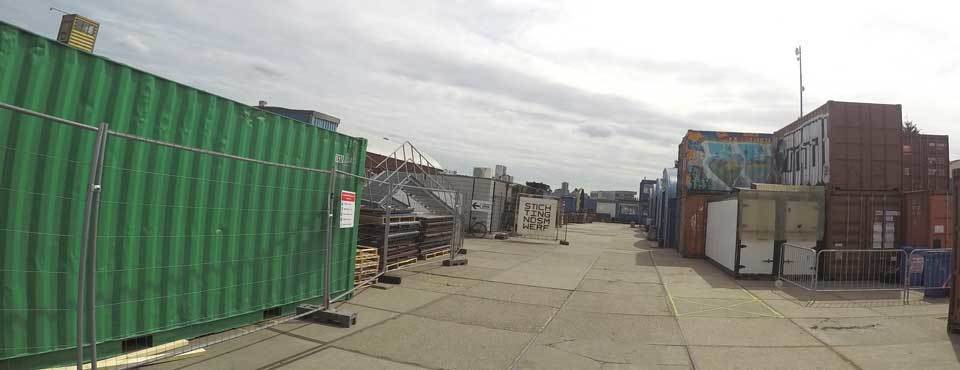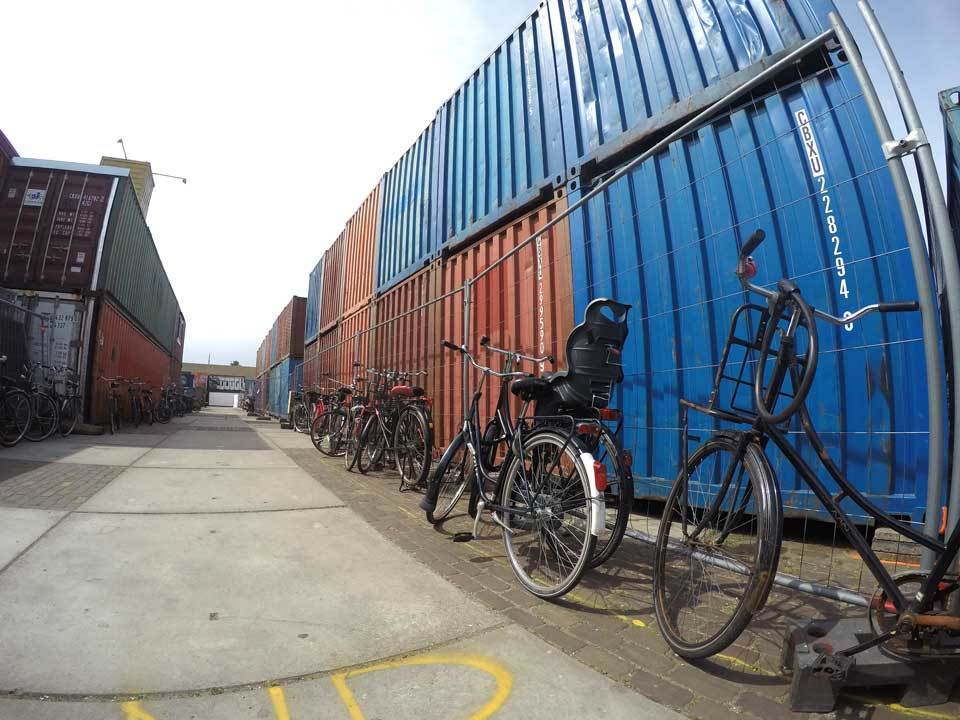
Money don't grow on trees...but with treehouse, dyne.org and commonfare, maybe it could?
This is a nice idea, 'We want neighbours, not tourists.' https://commonfare.net/en/stories/treehouse-complex-of-creative-studios-we-want-neighbors-not-tourists It's nice in a reactionary kind of way, though I would argue every community thrives when it's core members engage with visitors from afar for an exchange of ideas and values. Not everyone is a neighbour or local, let's let identities be free and unrestricted by labels. Of course any artist community can do well to attract visitors from outside, clients and customers who appreciate and can share in and support the community's creative enterprise and production. Those 'tourists' also bring an infusion of the cash euros necessary to support artists and their community to continue and grow. However the sentiment of "We want neighbours, not tourists.' does resound, as a call for circularity and acknowledgement of our shared experience in precarity, even as it establishes an exclusivity from the very beginning. Also, tourists are in the habit to pay, but wouldn't we invite our neighbours for free? Bottom line: making art costs money, and money don't grow on trees.
Whether an artist's focus is their own ego-centric expression and the business of art, or their work is eco-centric and driven by social responsibility, the biggest challenge is achieving the core investments necessary: space, materials, time, creative agents and communication. And every artist has at one time or another reached the boundaries of possibility enforced by financial constraints. And it's in the money where the big challenges of art and artist communities arise. The hardest obstacles to overcome include the management and shared ownership of materials, spaces, audiences and communication platforms among groups of artists who are notoriously, and predictably self-centered, precarious and chaotic, often socially challenged individuals.
The Treehouse project of creative studios at the NDSM park in Amsterdam was pitched to me as an experiment to do just that: bring a diverse group of 'anarchist artists' together in a new space, and see what will emerge as a community. I appreciate this framing of the project, because it intones such great potential even as it sounds like a total disaster waiting to happen. From what I understood, the basic concept is to take a plot of subsidized land, pile up stacks of shipping containers to convert to studios, populate these studios with creatives for super cheap rent, and implement shared labour and commons practices to ground an artist community.

But, so what? Another artist community? Another space to populate the NDSM development which already in some sectors is perceived to be overly trendy and crowded, full of 'comercial' art tourists and vaguely planned spontaneity. Another collection of studios with project spaces, a cafe/bar and group exhibitions and an eclectic assortment of creative industry from hand crafts to fine art to technology design to social services to whatever...Really, So what?
As an outsider I look at the NDSM webpage for the treehouse and it looks pretty sketchy, with a months-old message. "We are building a playground..." the byline reads, 'for serious artists who like to be full on into their work.' and extolls the virtues of group exhibitions. Deeper in, the organizers suggest you apply if you have "Finished a respected art school? Exhibited your work in the last year?" which is pretty elitist, like these things are requirements to be an artist? Kind of mixed messages around this thing treehouse, it actually looks like one of those art community shticks that I've known from California to the Black Forest, From Berlin to Beijing, and now in Amsterdam. These projects draw in tourists and journalists and promote a handful of creatives, but often dont address the diversity of art or artists in any locale. Rather they can reinforce standing trends in the art scene and while beginning from the rhetoric of community, eventually settle into clusters of loosely connected individuals and an in-clique of arts orgainzers who tightly control access.
So why care about treehouse? Because of Commonfare, and the folks at https://www.dyne.org/ that's why. While building their community, the treehouse organizers are beginning to think commons, and leveraging the experiences gained through Commonfare. Perhaps they are ready to really embrace the idea of the commons, and all that entails to the individual, the collective, the creative culture. I heard that dyne has been examining the project in particular, exploring the potential for another currency for their Social Wallet, specifically for treehouse. If they did, the project becomes immediately more interesting. If treehouse stakes its presence within Commonfare it would have access to the storytelling, groups, conversations and marketplace tools, powerful free tools for organizing and shping community they dont now have to build for themselves. But treehouse could go beyond simply capitalising on the Commonfare infrastructures to further their own cause. Treehouse could make an actual contribution: by sharing the experiences, challenges and triumpfs of their arts community as it emerges to inspire other arts projects across the Commonfare network. Imagine that!
Now I think that possibility is fascinating on a number of levels, in particular with reference to the stuff that dyne.org does. The social wallet they built can hold many different coins, and the CommonCoin deployment is their doing. But at Commonfare, it's a shame as there is no real value in the coin at the beginning of the project, and it will be quite some time before we would see the natural evolution of CommonCoin to have real-world value on a large scale. But treehouse concept mirrors that of dyne's Macao experiments https://commonfare.net/en/stories/take-care-and-make-your-coinmacao-at-santarcangelo-festival : it's expected the value of the treehouse coin will be fixed on the euro, and the cafe and bar, as well as events management and creative services of the treehouse could ground that value in euro income. This is a simple difference between the coin at commonfare, which we get 1000 per month and havent yet many meaningful ways to spend it, and a potential treehouse coin that can be used to buy drinks and attend seminars and even purchase art and creative services.
But that simple difference of real-world value changes everything, opening up crazy possibilities for collaboration as well as conflict. A treehouse coin could promote community growth, and help organize labour and sharing of resources, it could even grow into an international measure of the value of creative endeavour. Yet it also seems to lay a minefield of potential problems, foremost of which I think is giving a collective of supposed anarchist artists control over the value of their own currency without a participation mechanism in place for the community as a whole to determine that value and share in decisions made around the currency.

For Commonfare, a collaboration with the treehouse project could be important. Commonfare has a lot of awesome potential, but the community really has yet to form. The benefits and shared practices envisioned for Commonfare need to be deomonstrated before commoners will recognize those potentials in their own lives. People do a lot by mimicing others, appropriating and rearticulating communal ideas into new forms, and since we dont have a good example of a real-world use of the coin, many people who might could utilize such a thing simply cant imagine its value. Treehouse could give Commonfare a testbed, meaningful whether it's successful or it bombs catastrophically, to show people real world applications, and lessons learned, from actually DOing the work of taking control of our creative industry and social economy. For Commonfare it could also be a benefit, to establish a material presence in one of those Treehouse container studios, to promote, teach and learn more about commonfare and its art-world integrations. And for dyne? Well, I know it's a lot of work to do this tech stuff, and I can imagine there's a significant budget involved to make it. Would they trade that for treehouse coins? Would treehouse even ever have enough euro value to actually pay for professional cryptocurrency development services on the level of dyne.org I doubt it. But if something gets worked out and they did make it, i think for the dyne folks it must be exciting to plant their tech at the heart of a nascent community arts movement, and watch it flower or explode.
There are lot of different perspectives in this project, one of the biggest difficulties of implementing the coin on Commonfare was navigating partners' sharply contrasting ideas about the commons economy, and the valorization of labour and social exchange, discussion territory that's a sea filled with sharks and rogue waves. I think everyone agrees we want to usurp the dominant value concepts associated with our precarity, and the community coins do offer a pure self-contained value potential that could be wholly owned by a community. But there are also various other strategies for connecting the coin to euro dollar economies, while siphoning off some measure of community power from the hegemonies of fiat currencies at the core of our hated capitalism. Treehouse might use one of those strategies, and learn to benefit their community by operating their own inhouse currency, not independent from, but parallel to mainstream economy.
Visitors to treehouse could buy in with euros, and can use their treehouse coins to take in the bar, or purchase workshop tickets for the project space, or a ceramic cup from the pottery container, or get something printed at the graphic design studio... Upon leaving, folks could cash out for euros, save their treehouse coins, or even invest in a treehouse studio. Everyone working there would get paid in community coins, spaces could be booked through coins, while schedules and meetings and collective discussions to drive the project could run parallel on commonfare to engage as many voices in community decision-making as possible. Eventually commoncoins could be linked, and commoners from around the world would visit and contribute to treehouse organically. Win Win Win
Whether this collaboration goes forward remains to be seen, but it's an exciting potential for Commonfare, looking to the future, and making it real. If it does go ahead, it's anyone's guess if solid financials will ever pan out for these anarchist artists..
Because money don't grow on trees...
...but with treehouse, dyne.org and commonfare, maybe it could?